The New H. Moser & Cie. Pioneer Retrograde Seconds
An Agenhor retrograde seconds complication and its mechanics exposed on the fumé dial of Moser’s sporty Pioneer.

While the Streamliner has positioned itself as H. Moser’s flagship luxury sports watch, the Pioneer has been fighting its corner since 2015 as the brand’s sportiest, all-terrain, entry-level model. Starting with a Centre Seconds model, the collection escalated in complexity to include a Tourbillon, a Perpetual Calendar and even a skeletonised Cylindrical Tourbillon model. Thanks to the sturdy, 120m water-resistant Pioneer case, complicated movements can be worn and enjoyed with a carefree attitude. The latest complication to hitch a ride onboard the collection is a retrograde display with a module developed by Moser’s partner Agenhor SA, bringing to life this new Pioneer Retrograde Seconds.
H. Moser & Cie., which is part of the MELB Luxe holding, has powerful siblings. Sister company Precision Engineering AG, for example, produces Moser’s in-house hairsprings. Moving into more complicated territory, MELB Luxe acquired a minority stake in the complications specialist Agenhor SA in 2023, spearheaded by watchmaking wizard Jean-Marc Wiederrecht.
The star of the show is the 30-second retrograde counter featured in a large arc at 6 o’clock. Designed like a speedometer, the hand advances along the counter and flashes back to its starting position. In addition to the animation of the retrograde hand, the mechanism of the complication is revealed on the dial with its double snail cam. At the end of each cycle, the snail, which is in permanent contact with the finger, releases the energy stored by the hairspring (visible beneath the axis of the seconds hand), with a stud holder mounted on the mainplate. The rack, also visible under the bridge, positions the hand precisely on the track and releases the energy in one fell swoop. The skeletonised bridge is similar to Moser’s tourbillon bridges, and a two-tone disc beneath the snail indicates whether the watch is in the cycle’s first or second 30-second period.
The Midnight Blue fumé dial is signature Moser, as is the almost invisible logo applied in transparent lacquer at noon. To enhance legibility, the prominent and faceted hour markers are accompanied by circular plots of lume on the flange; the semi-skeletonised leaf-shaped hands are also treated with Super-LumiNova.
Hosting the retrograde seconds complication is a 42.8mm stainless steel Pioneer case with a thickness of 10.6mm. If we include the domed sapphire crystal, the thickness reaches a commanding 14.2mm. Fitted with a screw-down crown with an M logo, the case can fathom depths of 120 metres. Adding a touch of aerodynamic styling, there are four indented areas on the ergonomic case band with a ribbed decoration like the grille intake vents on a car. As a Moser creation, the finishings of this Pioneer Retrograde Seconds are impeccable, with alternating polished and brushed surfaces.
Powered by Moser’s HMC 250 automatic calibre (based on the recent calibre HMC 201) with a 3-day power reserve, the movement is coupled with Agenhor’s retrograde seconds module. Decorated with an anthracite finish and Moser’s signature double stripes, the skeletonised bridges and rotor offer unobstructed views, including the large balance wheel beating at 21,600 vibrations/hour.
The H. Moser & Cie. Pioneer Retrograde Seconds is available with an alligator leather strap, a sporty rubber strap, a textile strap or a steel bracelet – like most of the other Pioneer watches. The price is set at CHF 19,900 (incl. tax). For more details, please visit h-moser.com.

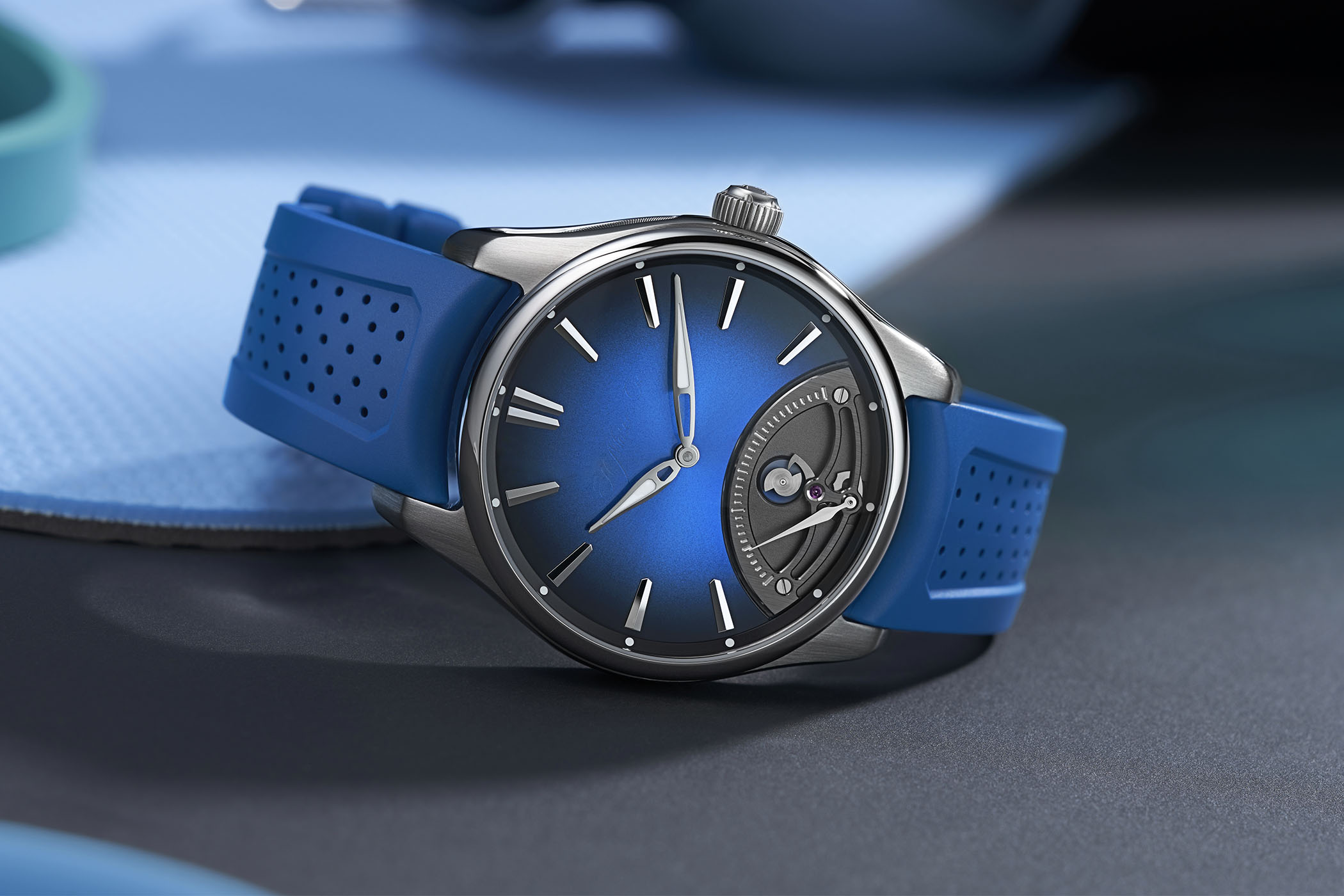
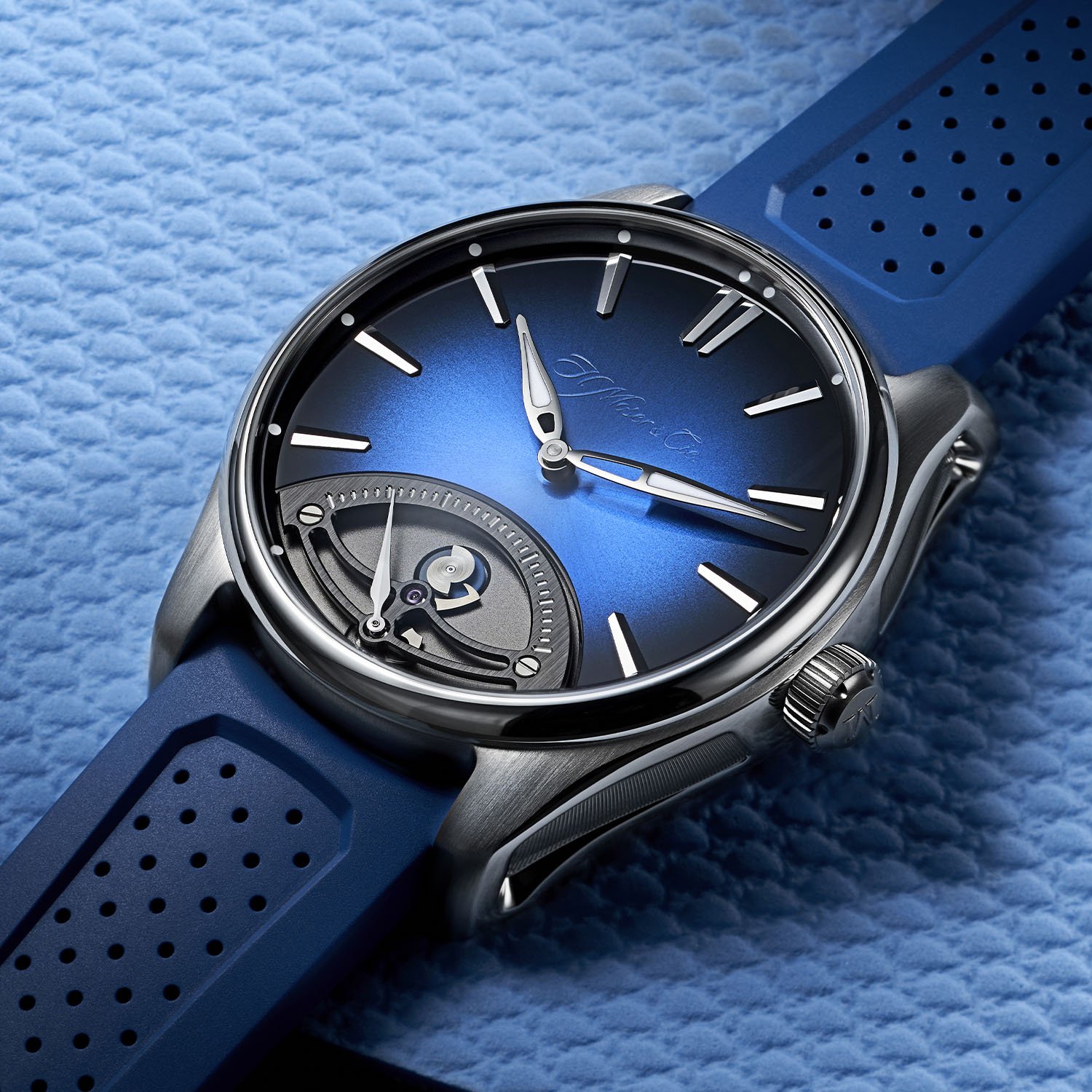
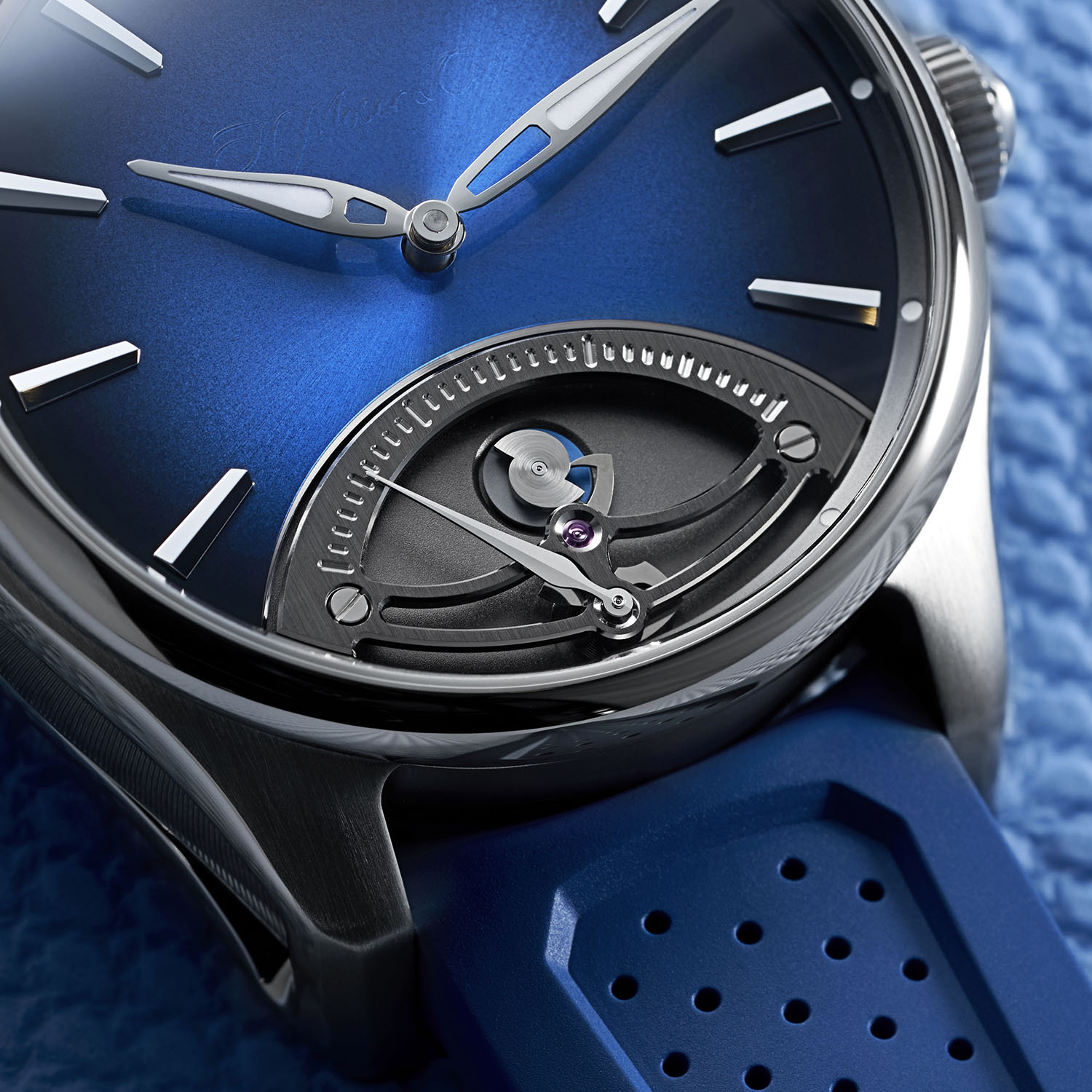
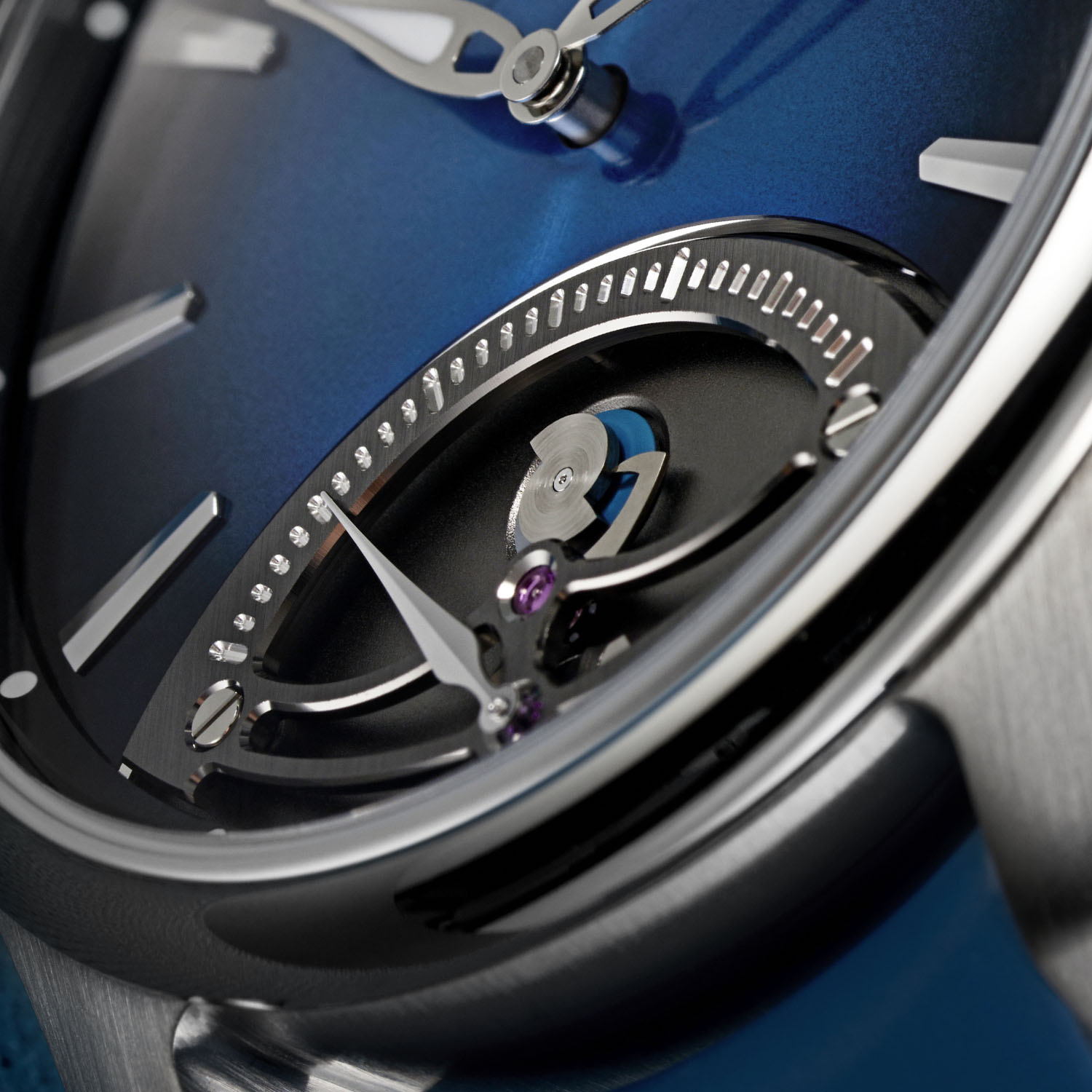
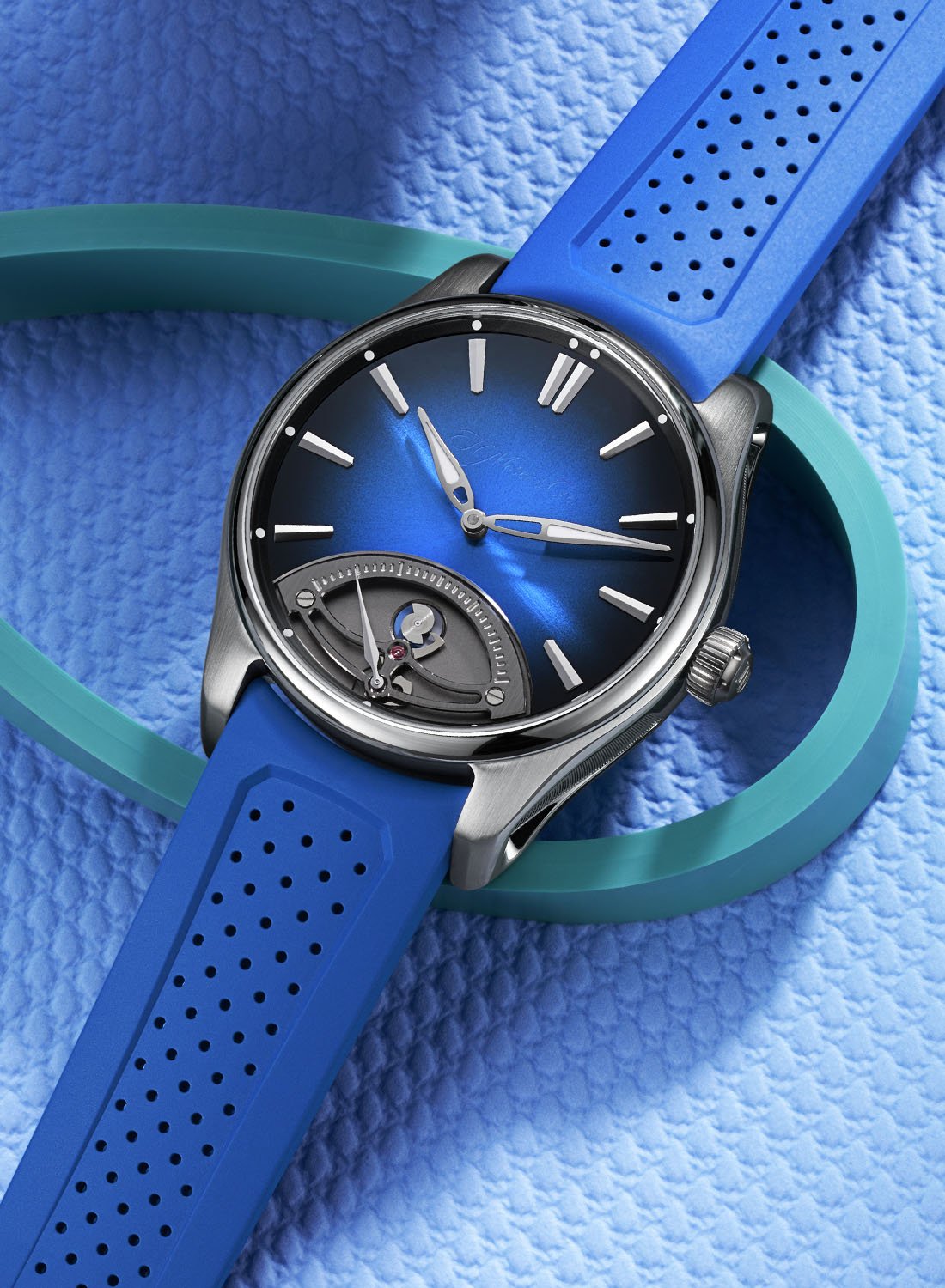
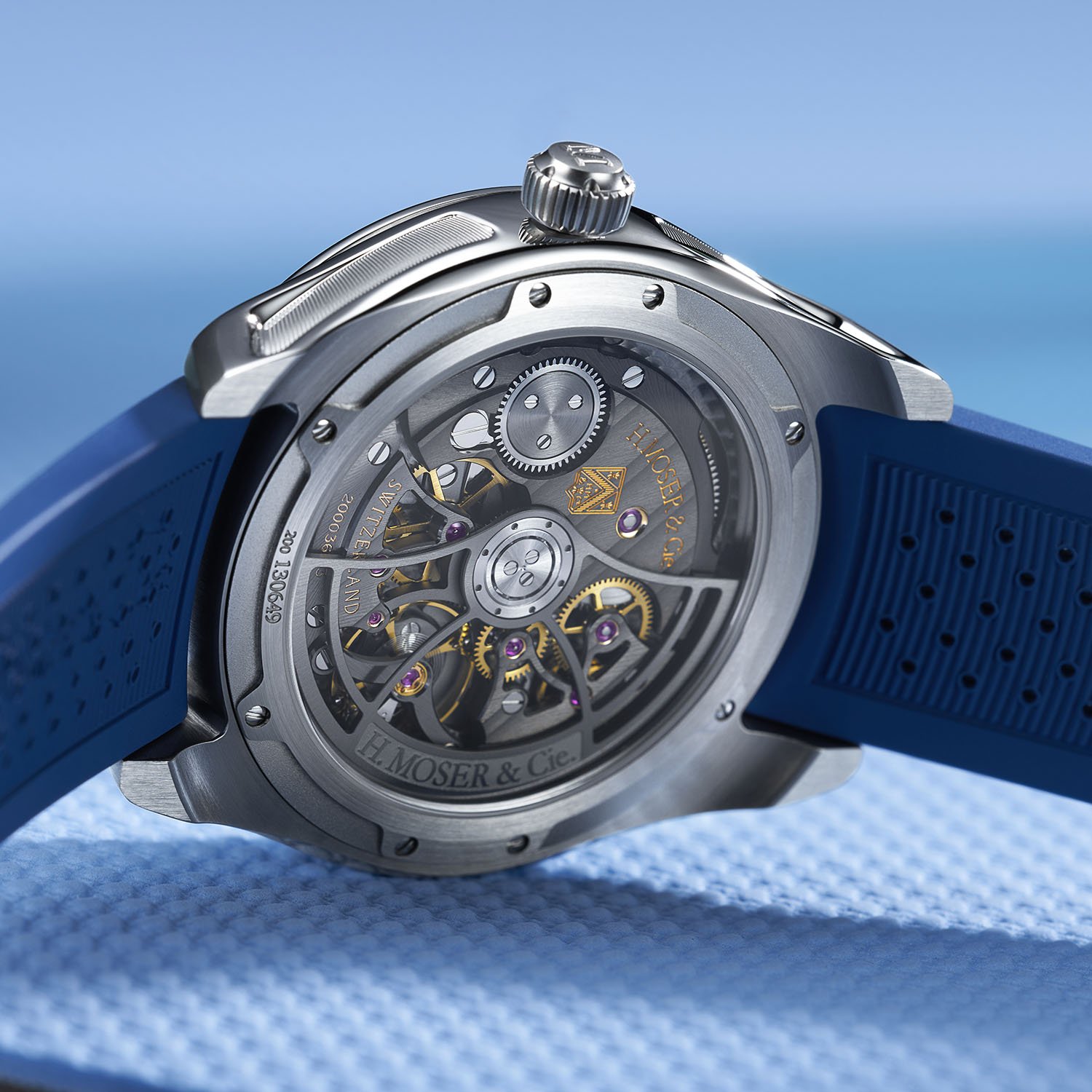
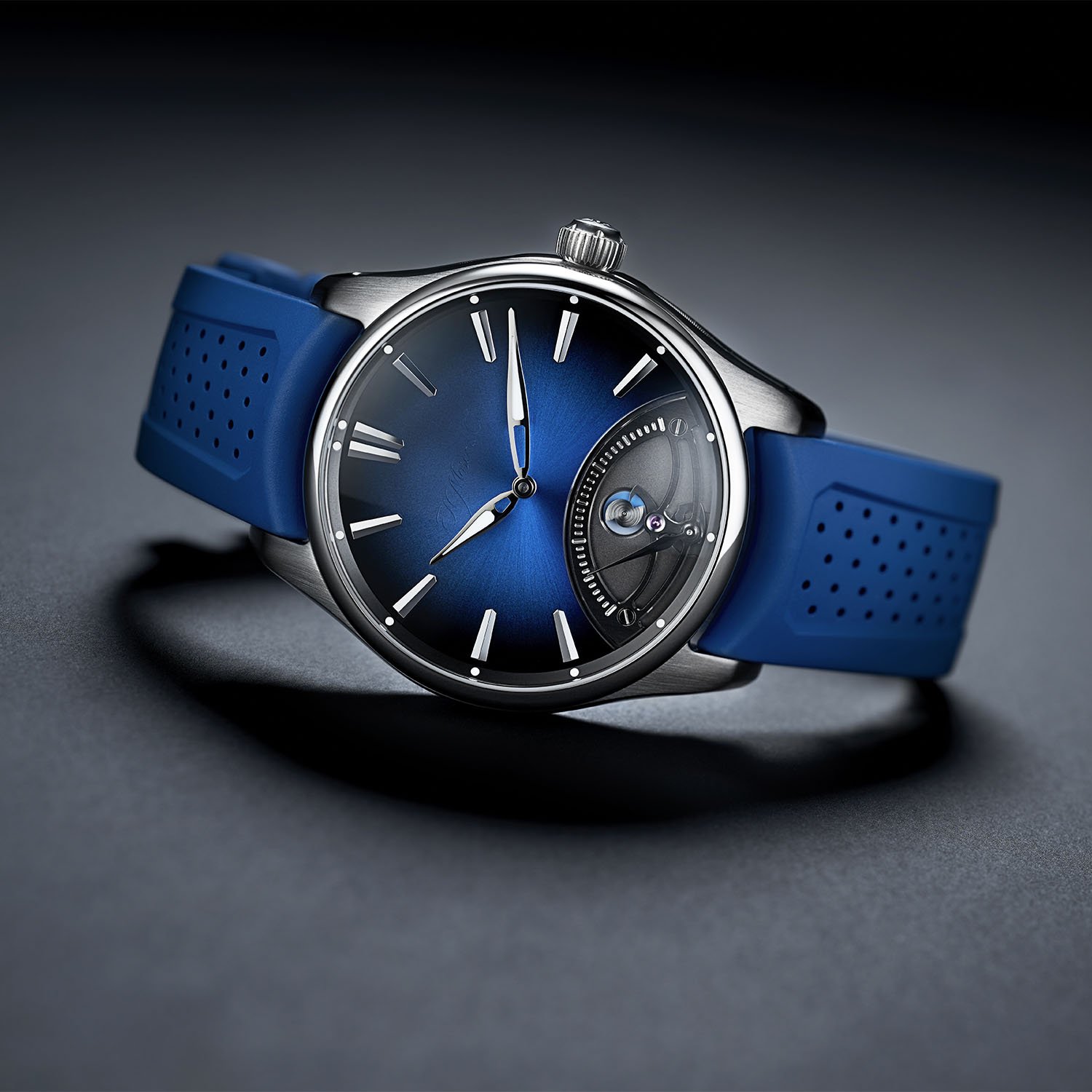



2 responses
It’s too big.
Only if you have small a wrist.